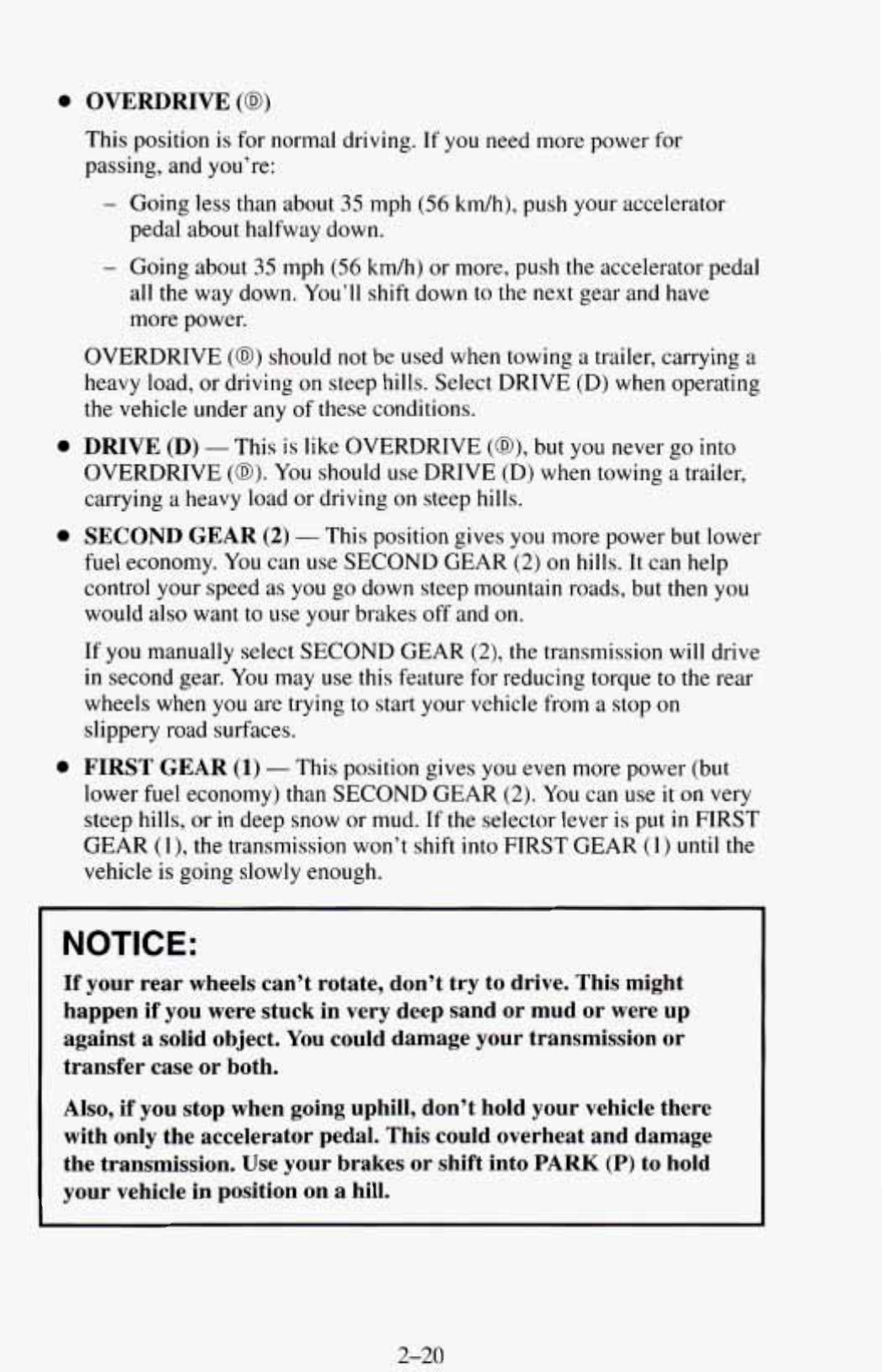
0
0
0
0
OVERDRIVE
(0)
This position is for normal driving. If you need more power for
passing, and you’re:
-
Going less than about
35
mph
(56
km/h), push your accelerator
-
Going about
35
mph
(56
km/h) or more, push the accelerator pedal
pedal about halfway down.
all the way down.
You’ll
shift down to the
next
gear and have
more power.
OVERDRIVE
(0)
should
not
be used when towing
a
trailer, carrying
a
heavy load, or driving on steep hills. Select DRIVE
(D)
when operating
the
vehicle under any
of
these conditions.
DRIVE (D)
-
This is like OVERDRIVE
(@),
but you never go into
OVERDRIVE
(0).
You should use DRIVE (D) when towing
a
trailer,
carrying
a
heavy load or driving
on
steep hills.
SECOND GEAR
(2)
-
This position gives you more power but lower
fuel economy. You can use SECOND GEAR
(2)
on
hills. It can help
control your speed as you go down steep
mountain
roads, but then
you
would
also
want to use your brakes off and on.
If
you
manually select SECOND GEAR
(2),
the transmission will drive
in
second gear. You may use this feature for reducing torque to the rear
wheels when you are trying to start your vehicle from
a
stop on
slippery road surfaces.
FIRST GEAR
(1)
-
This position gives you even more power (but
lower fuel economy) than SECOND GEAR
(2).
You can use it
on
very
steep hills, or
in
deep snow or mud. If the selector lever
is
put
in
FIRST
GEAR
(I),
the transmission won’t
shift
into
FIRST GEAR
(1)
until
the
vehicle is going slowly enough.
NOTICE:
If
your rear wheels can’t rotate, don’t try to drive. This might
happen if you were stuck in very deep sand or mud or were up
against a solid object. You could damage your transmission
or
transfer case or both.
Also,
if you stop when going uphill, don’t hold your vehicle there
with only the accelerator pedal. This could overheat and damage
the transmission.
Use
your brakes or shift into
PARK
(P)
to hold
your vehicle in position on a hill.
2-20


















